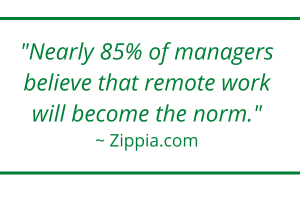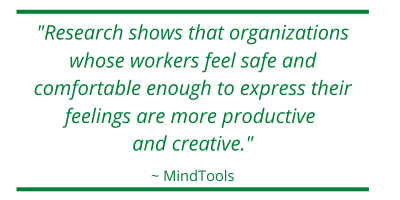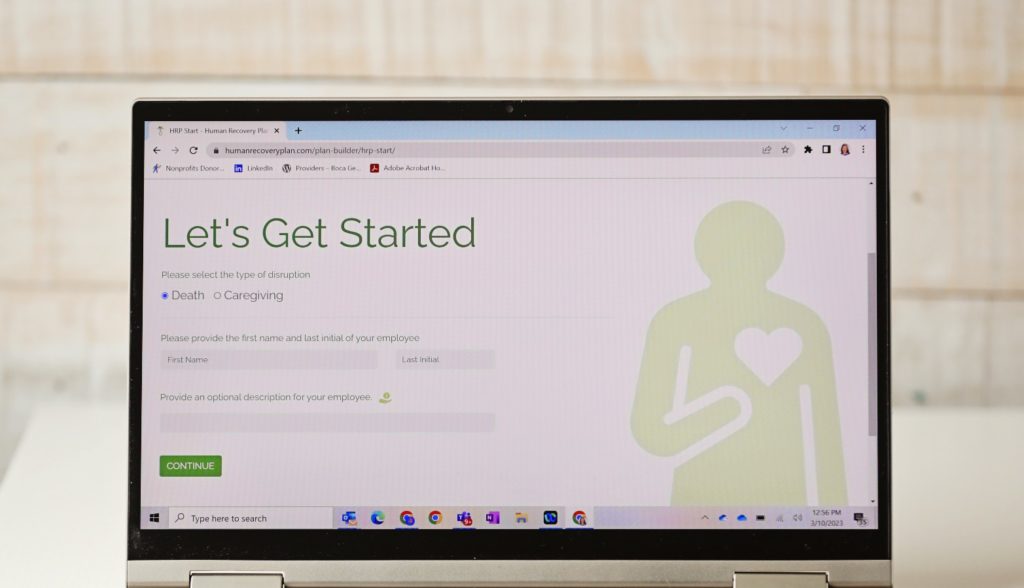
7 Ways to Support a Grieving Employee in a Virtual Workplace
Grief can be especially isolating for an employee working in a hybrid or virtual environment. If you’re managing a virtual or hybrid team, it’s a good idea to learn how to best engage a grieving employee and ensure they feel supported for the benefit of your entire team.
There’s no question, the virtual and hybrid work space presents a unique set of employee engagement challenges for managers, requiring you to be more conscientious about your communication strategies, including how you approach life disruptions that cause grief.
A growing virtual workforce.
 Between 2018 and 2021, the remote workforce grew four times from 6% to 26.7%. While much of this acceleration of growth was due to the COVID-19 pandemic, nearly 85% of managers believe that remote work will become the norm. (Zippia.com)
Between 2018 and 2021, the remote workforce grew four times from 6% to 26.7%. While much of this acceleration of growth was due to the COVID-19 pandemic, nearly 85% of managers believe that remote work will become the norm. (Zippia.com)
Grief can be an alienating experience for a work-from-home employee. Although it’s technically impossible to leave grief at the door of any workplace, the lack of boundaries between work and home are even blurrier in a remote work environment. And, without colleagues or supervisors in close proximity, grieving employees can feel out of sight and out of mind. This can lead to a sense of disconnect to the organization, which hurts job performance, productivity and team cohesion.
Life disruptions happen every day.
According to the Grief Recovery Institute, one in four employees is grieving at any given time (pre-Covid). If that sounds like a lot, consider the extent of common and challenging life disruptions that cause grief, including the death of a loved one, divorce, caring for an aging parent, miscarriage or fertility issues, personal illness or injury, and career transitions.
Strategies to support grieving remote employees.
If you’re managing a virtual or hybrid team of employees, how do you effectively engage and reintegrate a valued employee who’s grieving with the same level of empathy that you would in person? And how do you do that while also preserving team morale and safeguarding overall job performance?
1) Establish a virtual open door. A lack of awareness about what’s happening in your employees’ lives can hurt your business. Of course, that doesn’t mean you need to know everything about their lives, but you do need to know if they’re experiencing a painful life transition that will impact their job performance.
In the absence of water cooler chit-chat and physical proximity day-to-day, it’s harder to note changes in behavior, engage in casual conversation and observe nonverbal cues among your employees. When you know or can see that an employee is struggling, there’s more you can do to support them.
But if employees feel uncomfortable sharing what’s happening in their lives, problems can slip under a manager’s radar only to eventually surface in the form of unusual mood changes like irritability or indifference, lack of focus, on-the-job errors, a decline in productivity, turnover, presenteeism and absenteeism.
 “Research shows that organizations whose workers feel safe and comfortable enough to express their feelings are more productive and creative.” (MindTools)
“Research shows that organizations whose workers feel safe and comfortable enough to express their feelings are more productive and creative.” (MindTools)
Establish a virtual open-door policy by letting your team know that you want to hear from them and the best ways to connect with you. Also, create time to build connections with your remote employees. For example:
- Make time for small talk before kicking off a Zoom/video meeting with your team.
- Plan periodic team lunches/meetings in person if possible.
- Schedule weekly Zoom/video coffee breaks.
- Regularly touch base with team members individually by phone or video chat to see how they’re doing.
By establishing a personal and trusted rapport with your team, your employees may be more willing to talk to you when disruptive issues arise in their lives.
2) Make a personal connection. If you know your employee has suffered from a life disruption, don’t wait for them to reach out to you.
Acknowledging your employee’s grief is crucial, reminding them that you care and that they matter. Call or schedule a video call to check in. After that, check in regularly by phone, video and/or text. Also, if possible, let them know you’re available whenever they’d like to reach out to talk.
3) Listen. Ask questions to determine what your grieving employee’s work capacity is on any given day. Will it help them if you reassign some of their duties temporarily? Can you be more flexible with their work hours/availability as long as the job is getting done?
To ensure you respect your employee’s privacy, ask them what they’d like you to share about their situation with the team to help their colleagues understand why their availability might look a little different for the time being.
 4) Alert HR. Let your Human Resources department know if you have a bereaved or caregiving-affected employee. They’ll likely want to reach out personally to your employee to let them know the organization cares about their welfare and to make sure they’re aware of employee benefits that can help support them.
4) Alert HR. Let your Human Resources department know if you have a bereaved or caregiving-affected employee. They’ll likely want to reach out personally to your employee to let them know the organization cares about their welfare and to make sure they’re aware of employee benefits that can help support them.
5) Talk to your team. Schedule a video call to discuss the situation with your team (only share details that respect your employee’s privacy) and discuss ways to support your employee. This is where we can help you make a difference.
When you build a Human Recovery Plan®, we provide you with a menu of head and heart-based initiatives to choose from and customize for your employee.
6) Be flexible. While building rapport and engagement works best when video cameras are turned on during online team meetings, make an exception for your grieving employee if it makes them uncomfortable.
Also, prioritize getting the work done rather than worrying about how it gets done. That might mean coordinating a more flexible work schedule with your employee, especially if they’re suffering from poor sleep and the added stress of caring for grieving children and dealing with overwhelming paperwork because of the life disruption.
To decrease presenteeism and absenteeism, encourage your employee to take self-care breaks throughout the day like walks, time to rest/compose themselves between client meetings, and physician/counseling appointments.
7) Gather your resources. There’s no way around it: Mishandled grief hurts business.
Whether you’re managing a team that’s in-person, hybrid or completely remote, the Human Recovery Platform™ is the ideal leadership solution to ensure you know exactly what to do and what to say to address challenging life disruptions affecting the well-being of your employees.
Schedule a demo and we’ll show you how easy it is to strategically lead your employees through grief with care and confidence.

